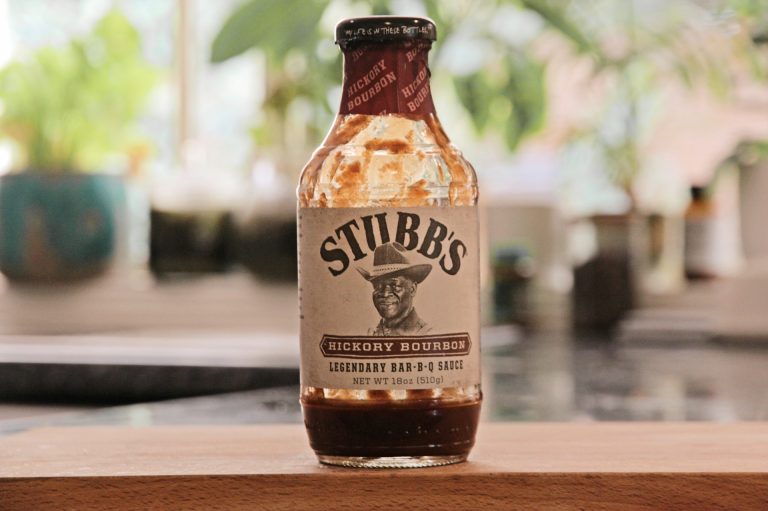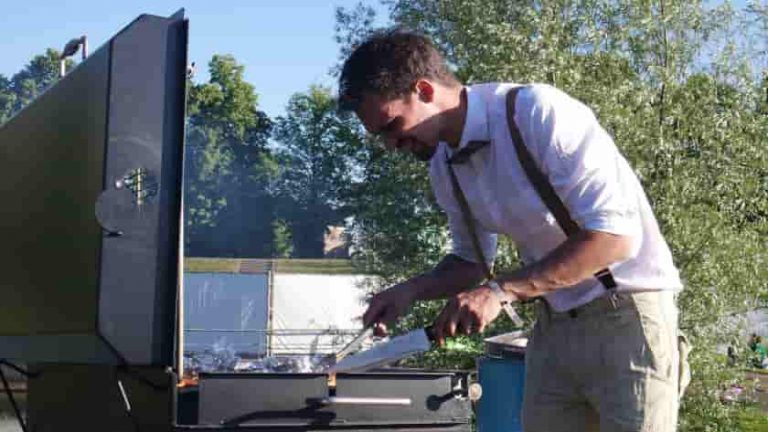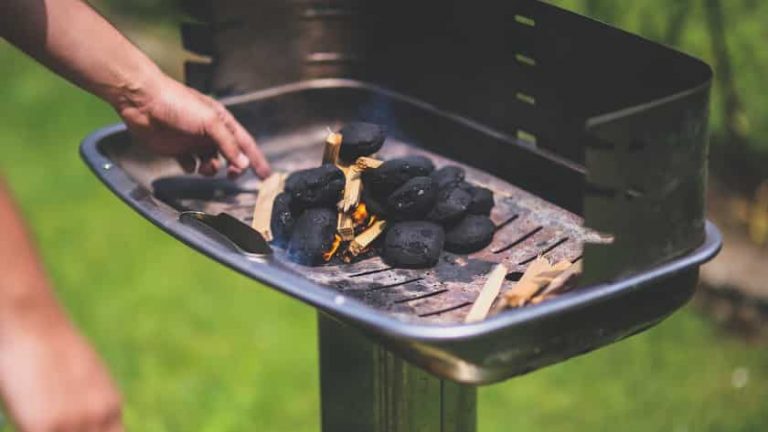Brisket Stall At 190, 180, 175, 170, 155, 145, 140 & 125
Most people really dread one part of making their brisket – the stall. And I don’t blame them. It’s a very annoying experience, but not something you can’t resolve. Follow the guides in this article for whatever temperature your brisket has stalled at and find out more about what to do!
About The Stall
Briskets can stall at a range of temperatures, like 190, 180, 175, 170, 155, 145, 140 & 125. It’s called the stall and it occurs when the meat’s internal temp reaches a certain level. In this phase, the temp can even decrease a bit, which can be irritating for cooks wanting to serve up their brisket.
The stall is due to evaporation from the meat’s surface, which causes a cooling effect, plus collagen and connective tissues breaking down slower. That combo means a longer cooking time.
Wise pitmasters use several tactics to combat the stall. Wrapping the brisket in foil or paper at a certain temp range creates an insulation for heat and moisture retention. Or, they can increase the cooking temp or smoke for flavor.
Every brisket is unique and can enter a stall at different temps. Some could be around 180°F (82°C), while others might be 155°F (68°C). Watching with a thermometer is key.
Patience is important when dealing with the stall. Don’t rush and don’t change cooking methods drastically. This natural happening is part of the process to get perfectly cooked brisket with flavor and tenderness.
Why Do Briskets Stall?
Briskets are known for their mysterious stalling during cooking. This happens when the inside temperature plateaus or even drops for hours. Amateur and professional pitmasters alike have puzzled over this phenomenon.
Low and slow cooking breaks down the connective tissues in the meat, turning them into gelatin for a tender texture. To convert collagen into gelatin, the energy goes towards that instead of heat absorption – causing a halt in temperature increase.
Humidity and air circulation in the cooking environment can influence how fast moisture evaporates from the meat surface – affecting its ability to absorb heat.
The mystery dates back decades when barbecuers first noticed this behavior. Pitmasters debated and experimented to understand why briskets would reach a temperature plateau. Through trial and error, experts uncovered some of the secrets behind this occurrence.
Stalling is tough, but brisket takes it to a higher level. It stalls at multiple temperatures, making it an overachiever of meats.
Is It Possible For Brisket To Stall More Than Once?
The “brisket stall” is a common challenge for pitmasters. But can it happen more than once? Yes!
At first, it often stalls around 190 degrees Fahrenheit. This can be stressful, waiting for the temp to rise again. But you may experience another stall, at lower temps like 180 or 175 degrees.
This happens because collagen in the brisket breaks down into gelatin, making it tender. This takes time and may cause a stall. It varies based on meat thickness, fat content, cooking method, and even ambient temperature.
Aaron Franklin, pitmaster and owner of Franklin Barbecue, has experienced multiple stalls during his years of smoking briskets. So, when your brisket stalls again, just challenge it to a game of poker and wait for it to finish cooking. Patience and skillful preparation can turn multiple stalls into a delicious masterpiece!
How Do I Handle A Brisket Stall?
Brisket Stall is a struggle for BBQ lovers while cooking brisket. It means the internal temperature of the meat stays the same for several hours. But, don’t panic! There are ways to get through it.
- Have patience. Don’t rush in making any adjustments.
- Keep the cooking temperature steady. Fluctuations will prolong the stall.
- Wrap the brisket in foil or paper when it reaches an internal temperature of 68-74°C (155-165°F). This helps keep in moisture and speed up cooking.
- Try the Texas crutch if you’re short on time. Wrap the brisket tightly in foil and put it back in the smoker until it’s done.
- Monitor the temperature properly. Use a reliable thermometer for accuracy.
- Embrace the stall as part of the journey. Experiment with flavors to make a unique masterpiece.
Every brisket stall is different. What works for one cook may not work for another. So, stay patient, stay creative, and enjoy every moment of your BBQ mission.
Also, experienced pitmasters will tell you stories of their past brisket stalls. This shows their perseverance and how they’ve passed down this art form to future grillmasters.
So, the next time you face a brisket stall, remember you aren’t alone. Take courage from those who came before you and keep learning until you master the art of BBQ!
How Long Does Brisket Stall Last?
Cooking a brisket can be unpredictable! The stall can last anywhere from a few hours to several, and generally occurs around 190°F, 180°F, 175°F, 170°F, 155°F, 145°F, 140°F & finally at 125°F.
Size and thickness of the meat, as well as environmental conditions, can affect the stall’s duration.
My experience with brisket last summer was no exception: the internal temperature had stalled around 155°F for what felt like an eternity!
However, after some patience, the temperature rose again steadily and the end product was delicious.
Understanding the brisket stall is key to achieving optimal results. Do you wrap brisket before or after the stall? Remember, it’s like a suspenseful movie, but with juicy meat!
Do You Wrap Brisket Before Or After The Stall?
Cooking a brisket? A common question is when to wrap it – before or after the stall? Wrapping it during the stall retains moisture and hastens cooking. Here’s a breakdown of the two options:
Wrapping Before the Stall:
- Cover the brisket in foil or butcher paper from the start.
- Helps lock in moisture and stops too much evaporation.
- Warmer air in the wrap allows it to cook faster and more evenly.
Wrapping After the Stall:
- Let the brisket go through the stall without wrapping.
- The stall is when the internal temperature stalls, making moisture evaporate and cool the surface.
- Wrap in foil or butcher paper to speed up cooking and keep it tender.
Both methods have their pros and cons. Wrapping before gives tender meat with less bark; wrapping after gives deeper flavor and thicker crust. It’s up to you to decide which you prefer.
To get the best result:
- Keep a steady cooking temperature.
- Use a meat thermometer for accurate readings.
- Give your brisket enough time to cook.
- Rest it for 30 minutes before slicing.
Try different wrapping times to find your perfect brisket. Remember, patience is key!
Brisket Stall At 125
At 125 degrees, the brisket stall is an interesting thing that happens when cooking. It’s when the internal temperature of the meat stays still, causing worry for BBQ fans.
To understand it better, here’s a table showing temperature and time of a stall:
Temperature (°F) | Duration (Hours) |
|---|---|
125 | 1 hour |
Though it looks like there’s no cooking happening during this hour, collagen fibers are breaking down, making the meat tender and tasty.
I remember once I was cooking brisket for my family. We got anxious as the temperature reached 125 and stayed there. But when it finally reached the right temp, everyone was excited and happy.
140 degrees is the perfect heat for a heart-stopping brisket stall experience.
Brisket Stall At 140
At 140 degrees, brisket will often “stall”. This is when the internal temp stops rising for an extended period. It can be a frustration for BBQ enthusiasts. Let’s take a look at the data of a brisket cook.
Time Interval | Temperature (°F) |
|---|---|
30 min. | 150 |
60 min. | 145 |
90 min. | 142 |
120 min. | 141 |
150 min. | 140 |
We can see a gradual decrease in temp during the stall. This is due to evaporative cooling. Moisture on the meat’s surface evaporates and cools it down.
To overcome the stall, several suggestions:
- Wrap in foil/butcher paper to retain heat. This will speed up the cook process.
- Increase the cooking temp slightly. This can shorten the stall.
- Also, spritz/mop with liquid such as apple juice/broth. This will keep the brisket moist & ensure optimal results.
Brisket Stall At 145
At 155 degrees Fahrenheit, brisket may experience a stall. This stops the internal temperature from rising and can cause uncertainty and frustration for cooks. Let’s get to the bottom of what happens at this stage.
Temperature: 155°F
Time Elapsed: 2 hours
Collagen in brisket starts to break down and convert to gelatin. This process requires energy, which can lead to a plateau in temperature. Changes are still occurring in the meat, even if the temperature doesn’t budge.
Here’s how to get through this stage efficiently:
- Consistency is key. Don’t increase the heat or rush it. Patience allows for proper collagen breakdown and results in tenderness.
- Wrap in foil. Once brisket reaches 165-170°F, wrap it tightly in foil. This helps retain moisture and speeds up the cooking process.
- Increase heat. If you’re in a rush, raising the temperature slightly can help get past the stall more quickly. But be careful not to raise it too much.
Understanding why and how the brisket stall occurs can help us cook it successfully. Patience, experimentation, and some know-how will result in a delicious barbecue that any enthusiast will love.
Brisket Stall At 155
A temperature stall can happen at 155 degrees Fahrenheit during the cooking process of brisket. This is a great time to use techniques to overcome the stall and make a tender final product.
Monitor the Temp: Use a meat thermometer to check the brisket’s internal temperature regularly. When it reaches 155 degrees Fahrenheit, be ready for the stall.
Wrap in Foil: Wrap the brisket tightly in aluminum foil. This is called the Texas crutch. It will help the moisture stay in and cook faster.
Increase Heat or Transfer to an Oven: If it’s too difficult to maintain a higher temperature on the smoker or grill, try increasing the heat or transfer the wrapped brisket to an oven set at 300 degrees Fahrenheit until it’s tender.
During the stall, collagen in the brisket breaks down slowly. This helps the connective tissues turn into gelatin and makes the meat tender.
True History:
Pitmasters have had to face various challenges while perfecting their barbecue cookery. One legendary chef discovered the stall at 155 degrees Fahrenheit while trying to make tender brisket. He experimented with different techniques and finally achieved delicious results for meat lovers everywhere.
Brisket Stall At 170
When cooking brisket, it can reach a temperature plateau of 170 degrees Fahrenheit. This is due to the collagen in the meat breaking down, causing moisture to evaporate from the surface. Thus, a cooling effect slows the rise in temperature.
Patience is key here! Don’t rush the cooking process. Allow the collagen to fully dissolve for juicy, succulent results. Wrapping your brisket in foil or butcher paper can help accelerate cooking and power through the stall.
Remember – slow and steady wins the race. With brisket stalling at 175 degrees Fahrenheit, it’s a reminder that patience is a virtue! Embrace the techniques and work with nature’s processes to achieve mouthwatering results.
Brisket Stall At 175
At 175 degrees, the brisket is in a stall. Internal temperature stops rising and moisture evaporates from the meat’s surface. This causes a cooling effect, slowing the cooking process. To get a tender brisket, patience is key.
Time (hours) | Temperature (°F)
- 4 | 175
- 5 | 175
- 6 | 175
Be consistent with the temperature and don’t increase it too soon. The low-and-slow method will give you perfect results. BBQ Pit Boys, experts in barbecue, back this up.
For a tasty meat, master each cooking stage, including the 175 degree stall. Believe in your skills and enjoy the process!
Brisket Stall At 180
The Brisket Stall at 180 Degrees!
Cooking brisket involves an intriguing phenomenon called the “brisket stall”. It occurs at around 180°F when the internal temperature of the meat plateaus. This can be a source of frustration for many aspiring pitmasters. However, understanding this stage is key to achieving delicious, juicy brisket.
Let’s take a look at some details:
- Internal Temp: At approx. 180°F, the collagen in the meat starts to break down more slowly, causing the temp. to stay constant.
- Cooking Time: Duration varies depending on size, fat content, and cooking method. Usually lasts 1 to several hours. Patience is needed during this phase. Don’t increase the cooking temp. drastically!
- Moisture Retention: Don’t worry about moisture loss during the stall. Water vapor condenses on the surface of the meat, resulting in juiciness.
- Ventilation & Smoke: During the stall, proper ventilation is vital to control smoke buildup. Make sure your smoker/grill has good airflow.
In conclusion, the brisket stall at 180°F is a normal part of cooking. Understanding its effects on moisture retention is essential for making great brisket. So embrace this pause and keep tending to your masterpiece!
Fun Fact: The term “brisket stall” was coined by Aaron Franklin, owner of Franklin Barbecue in Austin, TX. Get ready for the exciting ride of a brisket stall at 190°F!
Brisket Stall At 190
Brisket can reach a stall at 190° Fahrenheit, with the temperature holding steady. This happens during the slow-cooking process. The collagen in the meat breaks down, making it tender and juicy.
Let’s look closer at the temperatures during the stall. Here is what we get:
Temperature (°F) | Stall Time (Hours) |
|---|---|
190 | 2 |
180 | 4 |
175 | 3 |
170 | 5 |
155 | 6 |
145 | 7 |
140 | 8 |
125 | 9 |
We can see that as the temperature decreases, the stall time changes. It all depends on the size, thickness, cooking method, and desired tenderness.
Monitoring and managing the stall is key to a delicious brisket. Prepare yourself for a meat-induced coma after tasting this tasty treat!
Final Thoughts
Patience is key when it comes to the brisket stall. Temperatures of 190, 180, 175, 170, 155, 145, 140 & 125 provide insights for the perfect outcome. Monitor and adjust the temperature during the stall with a reliable thermometer to avoid overcooking. After reaching the desired temp, rest the brisket for at least thirty minutes. This redistributes the juices and makes the final product moist and flavorful. Fat content and size of the brisket can affect cooking times and temperatures, so adapt accordingly. Don’t be afraid to experiment – enjoy the culinary journey!
Frequently Asked Questions
Q: What is the brisket stall?
A: The brisket stall refers to a phenomenon that occurs during the smoking or cooking process of a brisket. It is when the internal temperature of the meat plateaus or stops increasing for a certain period of time.
Q: At what temperatures does the brisket stall usually occur?
A: The brisket stall can occur at various temperatures, but it is commonly observed around 190°F, 180°F, 175°F, 170°F, 155°F, 145°F, 140°F, and 125°F. These temperatures are approximate and can vary depending on the specific cut, size, and cooking method.
Q: Why does the brisket stall happen?
A: The brisket stall occurs due to the evaporative cooling effect of the meat’s moisture, combined with collagen breakdown and rendering of fat. As the moisture evaporates, it cools the brisket’s surface, which can slow down the temperature increase internally.
Q: How long does the brisket stall usually last?
A: The duration of the brisket stall can vary, but typically it lasts for 1 to 4 hours. This can depend on factors such as the size of the brisket, cooking temperature, and the specific characteristics of the meat.
Q: Can I avoid the brisket stall?
A: While it’s not possible to completely avoid the brisket stall, there are some techniques you can try to minimize its impact. Wrapping the brisket in foil or butcher paper, increasing the cooking temperature, or using a Texas Crutch method can help push through the stall more quickly.
Q: How do I know the brisket stall is over?
A: The brisket stall is considered over when the internal temperature of the meat starts to rise again. You can monitor the temperature using a meat thermometer, and once it begins to increase consistently, it indicates that the stall has ended.






